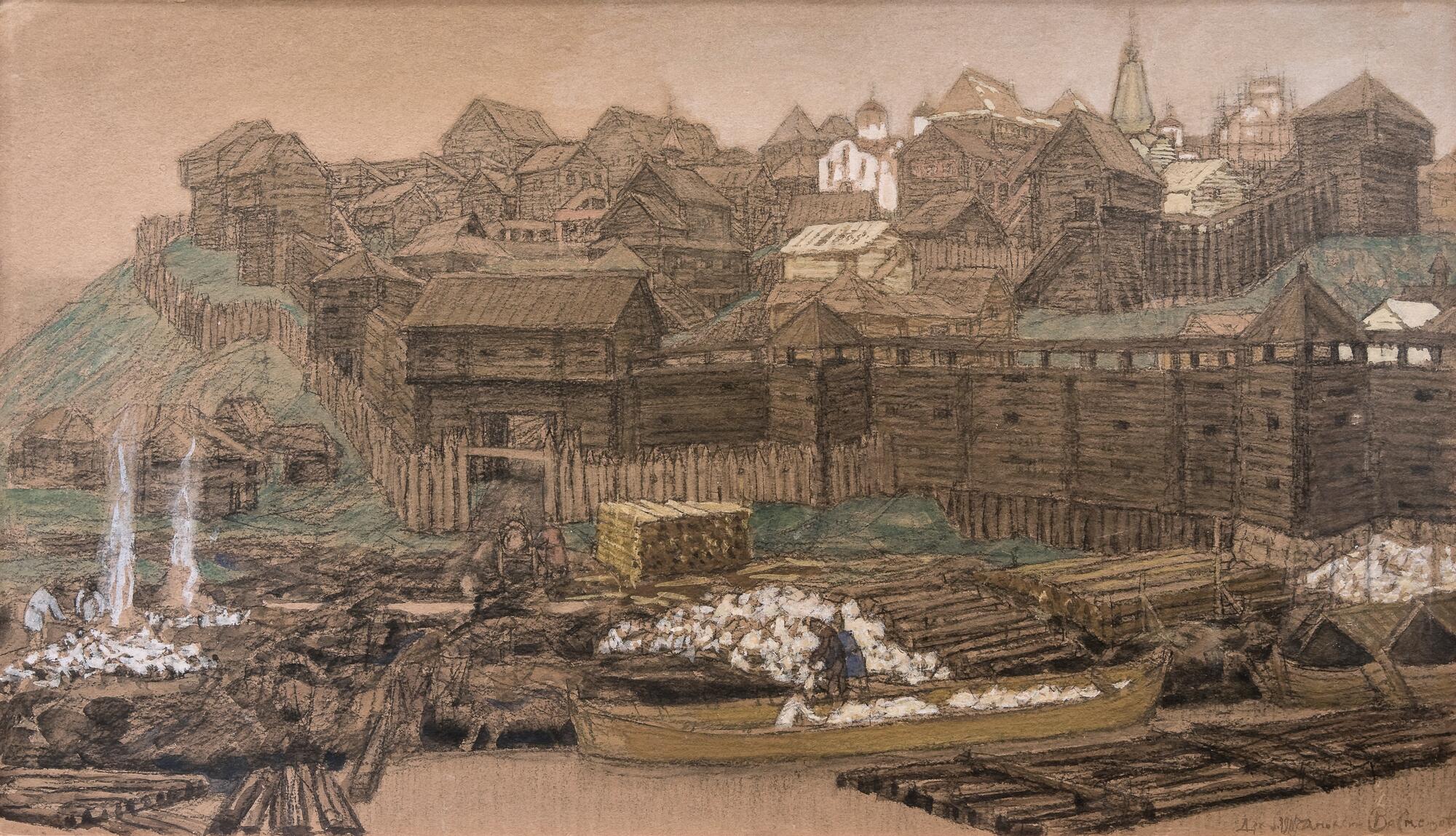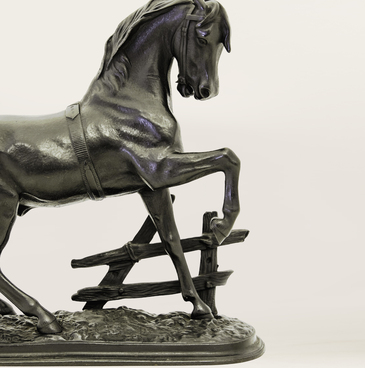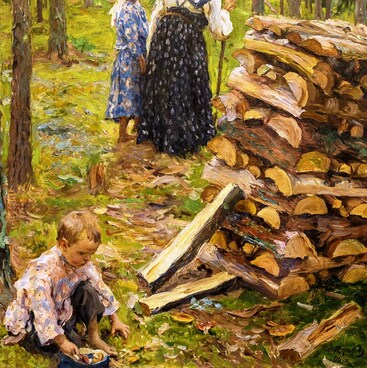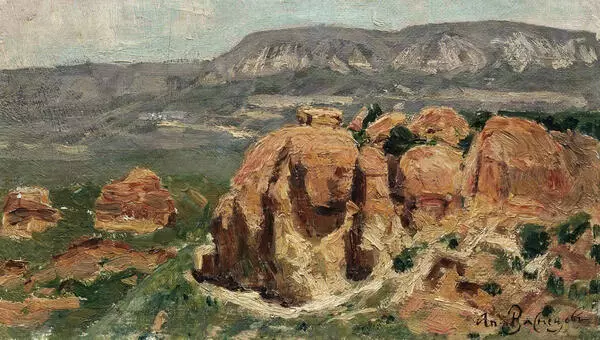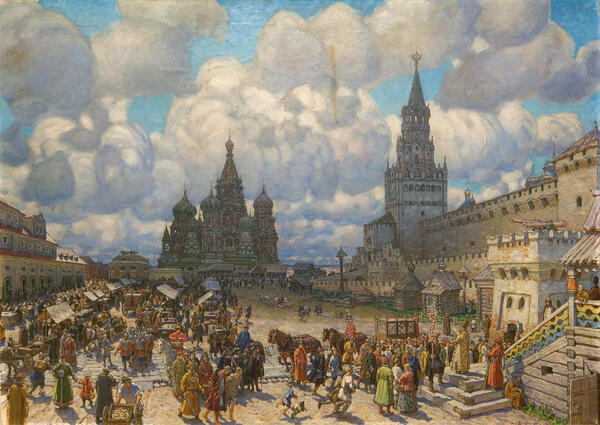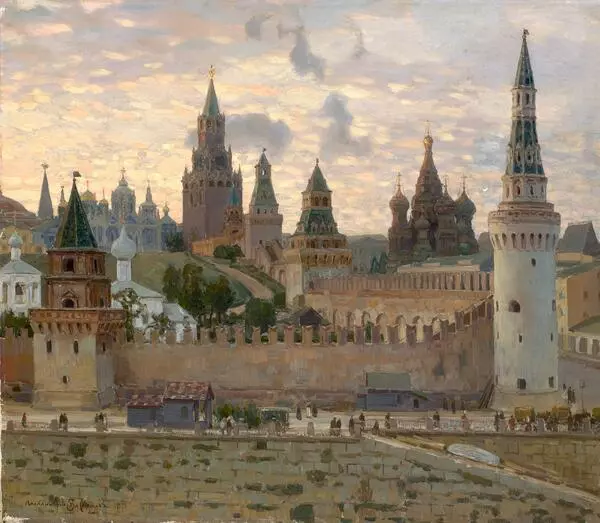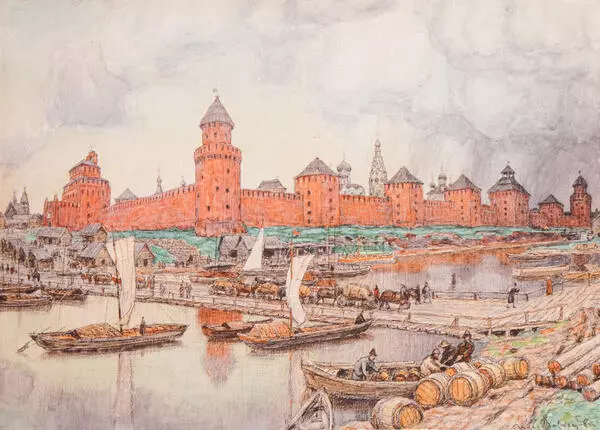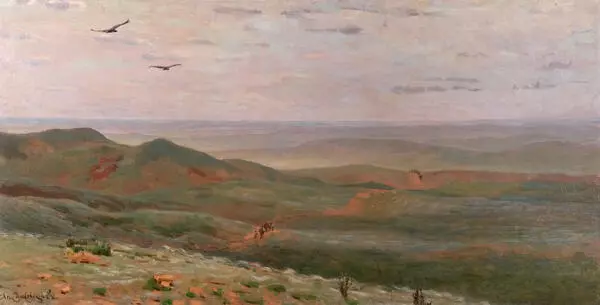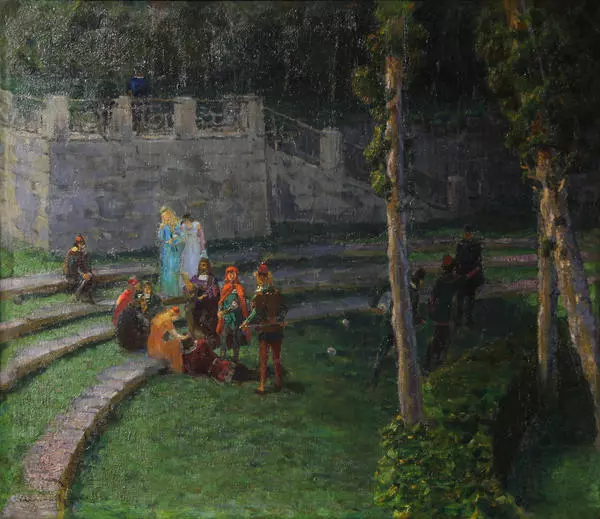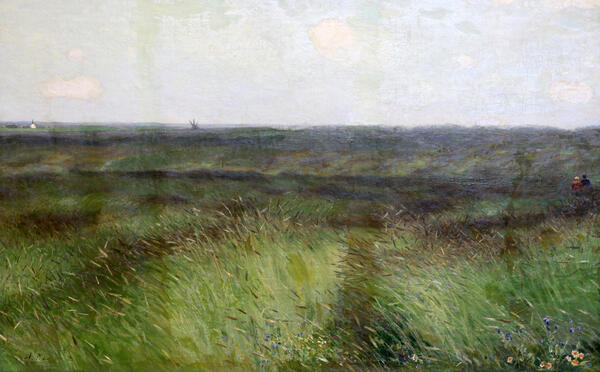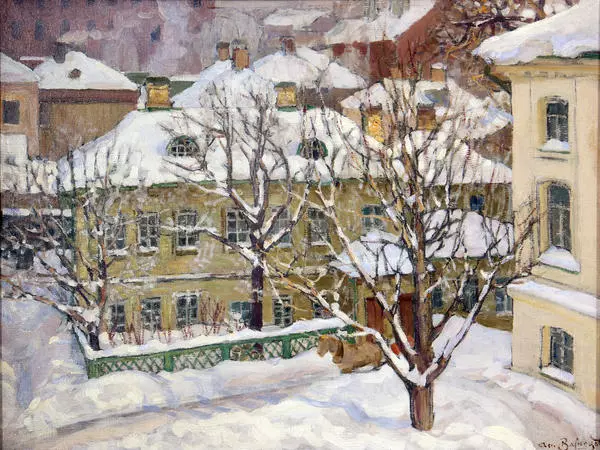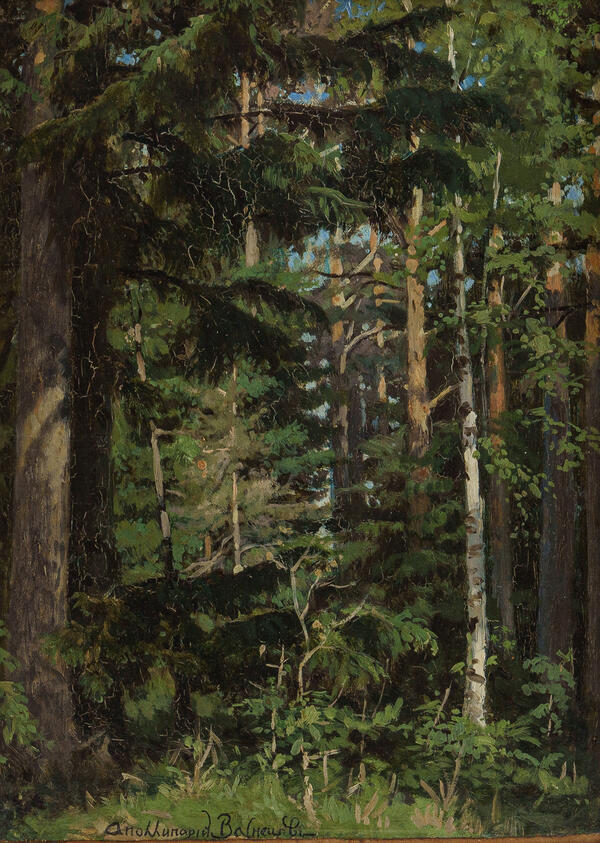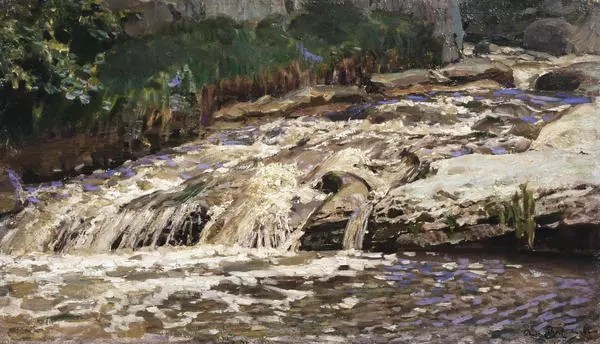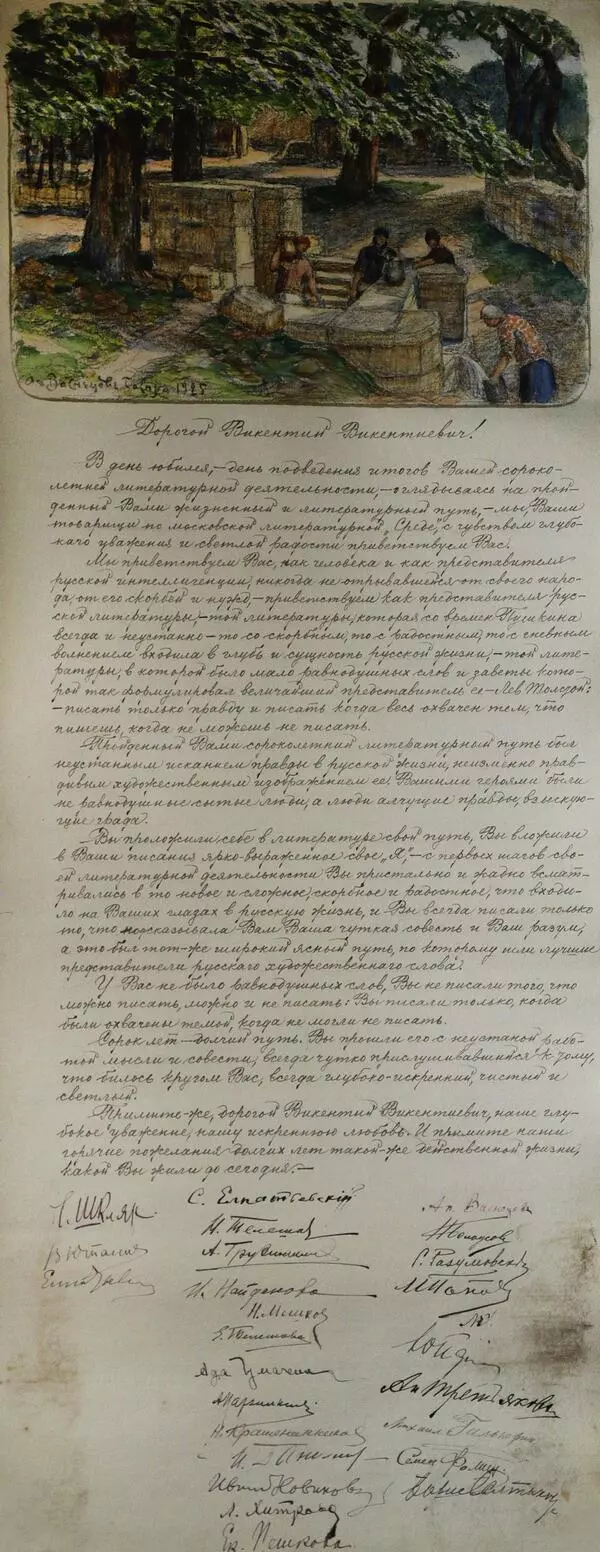The interest in subjects of national history was one of the main trends in Russian art at the turn of the 20th century. Russian history and culture provided the basis for many artists, united by the creative search and exploration of national identity. Apollinary Mikhailovich Vasnetsov was one such artist.
At the turn of the 20th century, Vasnetsov “found his subject, recreating medieval Moscow on canvas with almost pinpoint accuracy.” The artist’s knowledge of history and imagination helped him to establish a certain type of historical and architectural landscape, which combined the accuracy of the ancient architecture of Moscow and its poeticization.
The museum houses a unique work — Apollinary Vasnetsov’s drawing on cardboard called “Moscow Kremlin During the Reign of Ivan Kalita”, which recreates 14th-century Moscow. By arranging the Kremlin with its characteristic Old Russian wooden architecture in the background, the artist uses the foreground to depict the imagined historical scene — white stone being unloaded and fired (to be later used for the city’s construction).
The image of the ancient city with its historical accuracy and “certain uniqueness of the distant Middle Ages” is the focal point of the painting, and the genre element seems to bring those distant centuries closer so that the historical identity of Moscow is perceived as a fairy-tale and poetic image of an old Russian city.
Vasnetsov’s penchant for archeology and history prompted him to participate in archeological excavations on the territory of Moscow. He was then part of the Commission for the Preservation of Ancient Monuments at the Moscow Archeological Society, which he joined in 1906. From 1918, he headed the Commission for Old Moscow Studies and conducted archaeological research at renovation sites in the central part of the city.
Vasnetsov created this picture with a mixed technique, using charcoal, black chalk, watercolor and whitewash. By applying these materials onto warm-colored cardboard, the artist hoped that his works would produce the effect of historical accuracy and “documented art”.
Juggling his artistic and scientific skills, Apollinary Vasnetsov created a series of works centered around the theme of “Old Moscow”, which recreated the architectural appearance of the Kremlin that changed consistently throughout the years.
